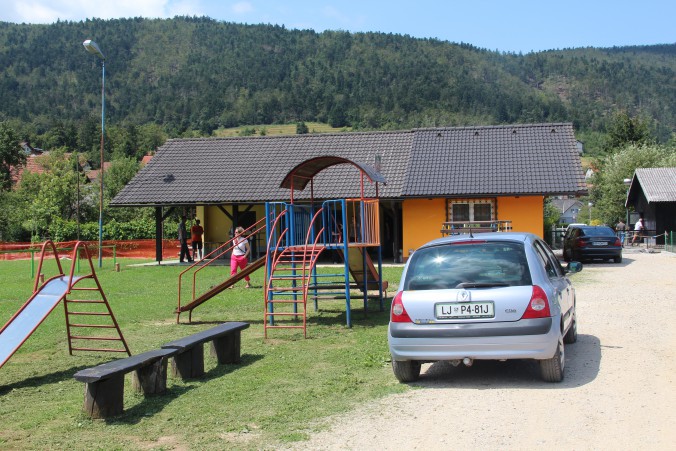by Magdalena Waligorska
Photo: The former site of the POW camp at Borovnica
The POW camp at Borovnica, open soon after the Yugoslav army liberated this part of Slovenia in 1945, used to be called the ‘new Dachau’, with 3,000 inmates at the peak of its activity. Today, the former ‘new Dachau’ is a non-place. No monument marks the site, now ‘overgrown’ by the expanding village of Borovnica. New houses, private gardens and a playground for local children grants the space an uncanny innocence. The only lasting trace of what once happened here is the fact that the local inhabitants still call this part of the village the “Lager”.
Urška Lampe, young historian from Koper, researching the history of the camp, was the first one who, after decades of silence, brought the forgotten story of the site to the attention of the village inhabitants. Interviewing local witnesses and giving a public talk at the local cultural centre, Urška met with some resentment, but also encouragement from a part of the local people who wanted to know more about this particularly troubling chapter in Slovenian’s recent history.
Soon after Tito’s troops marched into Trieste on the symbolic 1st of May 1945, just hours before the Americans could reach the city, Italian fascists and anti-communists filled the camp at Borovnica. Poor sanitary conditions, lack of water and malnutrition soon brought their toll when an epidemics of typhus broke out. Inmates, performing forced labour, faced starvation and maltreatment of brutal guards. The camp ceased operating after a few months, in August 1945, when the Borovnica inmates were transferred to other camps of Italian POWs across Yugoslavia.
In the post-war decades, this chapter of local history, naturally, enjoyed no attention of Yugoslav historians. The Borovnica inhabitants, some of whom still remember the Italian POWs, say that the only occasional visitors who came looking for the camp after the war, were the Italian families of former inmates, looking for the place their relatives were imprisoned or died at. Given the rising Italian right-wing discourse foregrounding the expulsion of Italians from Dalmatia and communist atrocities on Italian civilians, the story of Borovnica, even today, will not be an easy one to confront. The openness and hospitality with which the local community of Borovnica welcomed our workshop at the camp site, and the involvement of young historians leaves hope, however, that the place will not remain a non-place for much longer.
